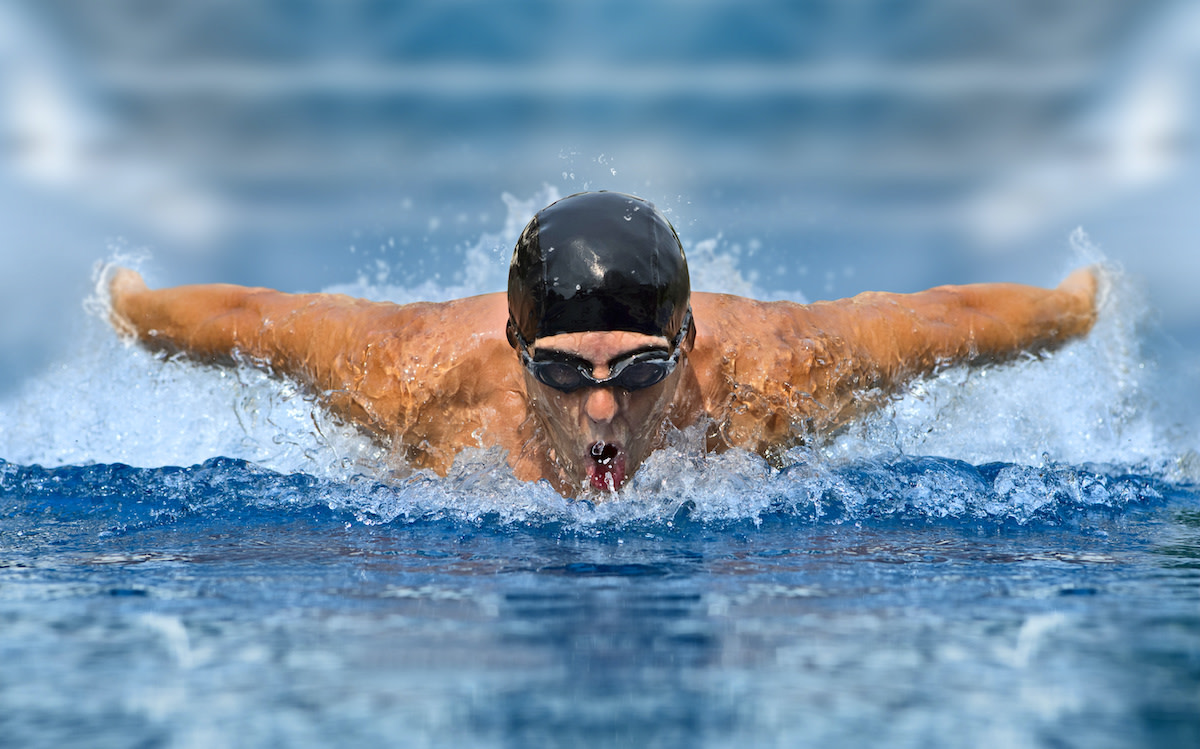8 Swimming Strokes: How to Swim the Basic Swimming Strokes
Written by MasterClass
Last updated: Sep 23, 2021 • 4 min read
Learn about popular swimming strokes, from beginner to intermediate to expert.
Learn From the Best
What Are Swimming Strokes?
Swimming strokes are different types of active movements that propel your body through the water. Some swimming techniques come more naturally than others. From recreational and fitness swimming to world-class competition, there are strokes for swimmers at every level.
4 Competitive Swimming Strokes
There are four main swimming strokes widely taught and practiced around the world. These feature in swimming competitions from grade school to the elite athletic level.
- 1. Breaststroke: Swimmers perform the breaststroke with their bodies facing down in the water. The synchronous arm stroke pulls down and back, and the leg movement is a frog kick or whip kick, in which the legs spread away from each other, then snap together in a propulsive motion. This stroke, the slowest competitive stroke, is popular with competitive swimmers and makes for an excellent workout.
- 2. Backstroke: Swimmers perform the backstroke on their backs with their faces pointed upward. The backstroke kick is a continuous flutter kick, and the arm movement is alternating, reaching backward and then pulling inward and back under the water.
- 3. Front crawl: Also known as freestyle stroke, the front crawl is the fastest stroke and one of the most efficient. The swimmer faces forward, using each alternating arm to slip into the water before their head, then pull back underwater. Simultaneously, the legs perform a steady flutter kick.
- 4. Butterfly: The butterfly stroke is one of the most dynamic strokes. Many swimmers consider it the most challenging stroke, and it also makes for a robust workout, especially for the upper body, as it requires arm and upper-back strength. The swimmer reaches forward with both arms in a single coordinated movement, pulling themselves forward while kicking with both feet together in an undulating motion that’s called the dolphin kick.
4 Swimming Strokes for Fitness and Recreation
The following swimming strokes can be an excellent workout and can help you develop stamina, efficiency, and comfort in the water.
- 1. Elementary backstroke: The elementary backstroke is an excellent way for beginners to get comfortable and fit in the water. The arms and legs move in a coordinated open-and-shut movement, first drifting outward so that the body resembles an “X,” then forcefully coming back into alignment to propel the swimmer forward. The leg movements are similar to the breaststroke kick but occur while the body is facing upward.
- 2. The sidestroke: The sidestroke is an efficient and relaxing stroke that’s good for beginners and suitable for longer-distance swimming where energy conservation is crucial. Lifeguards often use the sidestroke, as it can be swum with one arm, while the other is available to pull a person in distress. The swimmer’s body position is sideways in the water. The legs perform a scissor kick and the arms alternate with the top arm pulling out in front of the chest while the bottom arm pulls downward toward the bottom of the pool.
- 3. Trudgen: The trudgen is a hybrid stroke that combines elements of the sidestroke and the front crawl. Perform a scissor kick while the arm pulls alternate, just like the front crawl, to propel through the water.
- 4. Combat side stroke: The CSS is a swimming stroke explicitly designed for efficiency and a low profile for the swimmer. Developed by and for U.S. Navy SEALS, it is a full-body workout, and you can swim it over long distances in open water.
6 Tips for Learning Swimming Strokes
Like any kind of skillful physical activity, swimming takes practice, focus, and patience. Follow these tips when learning new strokes:
- 1. Focus on learning one or two strokes at a time. This will give you some degree of variety, while also providing a more comprehensive workout. It will also focus you on learning the basics before moving on to more complex and demanding strokes.
- 2. Include rest and recovery time in your workout routine. You’ll probably notice how quickly you can tire yourself out from swimming. This can feel good, and it is an excellent way to exercise, but don’t overdo it. Rest and recovery can help you reap the benefits of swimming while minimizing the risks.
- 3. Use swim drills: Incorporate basic drills into your swimming routine to develop your fundamentals. You can use a kickboard to work on your leg strokes or practice a stroke using just one arm and then the other.
- 4. Practice your breathing: Some strokes, such as the butterfly stroke, require a specialized way to breathe, as there is only a brief window when the swimmer’s mouth is above the water. Start with strokes you can perform with your face above the surface of the water, like the backstroke.
- 5. Learn to float: Floating is an integral part of swimming, no matter what stroke or strokes you choose. Get to know your body’s natural buoyancy. Because the human body is mostly water and your lungs always have some air in them, floating happens naturally, especially when you’re on your back. The more comfortable you are in the water, the easier it will be to progress in your swimming.
- 6. Always swim with others. Whether in a pool or the ocean, it’s always good to have a buddy with you. This might be a swimming instructor, a friend, or a whole class of aspiring swimmers. There is strength and safety in numbers.
Learn More
Want to become a better athlete? The MasterClass Annual Membership provides exclusive video lessons from the world’s best athletes, including Serena Williams, Stephen Curry, Tony Hawk, Wayne Gretzky, Misty Copeland, and more.
